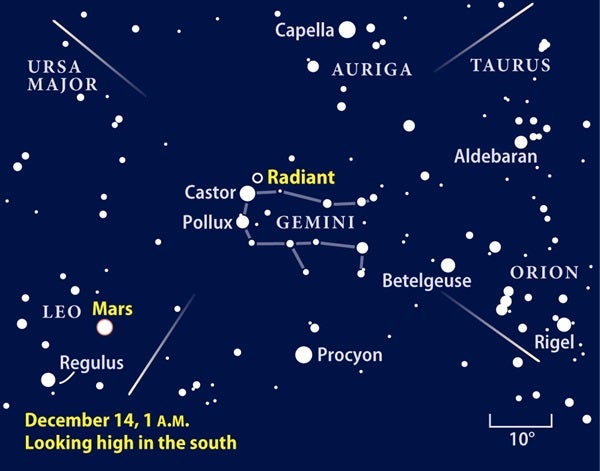“Conditions couldn’t be better for the Geminids this year,” says Astronomy magazine senior editor Michael E. Bakich. The waning crescent Moon doesn’t rise until nearly 6 a.m. — after morning twilight begins — so it won’t shed any unwanted light into the night sky. The best views will come in the hours after midnight, when the rate peaks and the spot from which the meteors appear to radiate passes overhead.
Any stray light in the sky tends to drown out fainter meteors, so find an observing site far from the lights of the city. A large field is ideal because you can then let your eyes roam across the whole sky. December nights tend to be cold, however, so bundle up in layers. Reclining in a lawn chair is a great way to take in a lot of the sky at once, but be sure to get up and walk around occasionally. It also helps to drink some hot coffee or tea.
The Geminids begin as tiny specks of dust that hit Earth’s atmosphere at 81,000 mph (130,000 km/h), vaporizing from friction with the air and leaving behind the streaks of light we call meteors. The meteors appear to radiate from the constellation Gemini the Twins (hence their name), near the bright stars Castor and Pollux. The meteors can appear anywhere in the sky, however, and actually leave longer trails the farther from the radiant they are.
Sign up for our free weekly e-mail newsletter
- Observing podcast: Geminid meteor shower, California Nebula, and Baby Nebula
- StarDome: Locate the Geminid meteor shower’s radiant in your night sky with our interactive star chart.
- Sign up for our free weekly e-mail newsletter.










